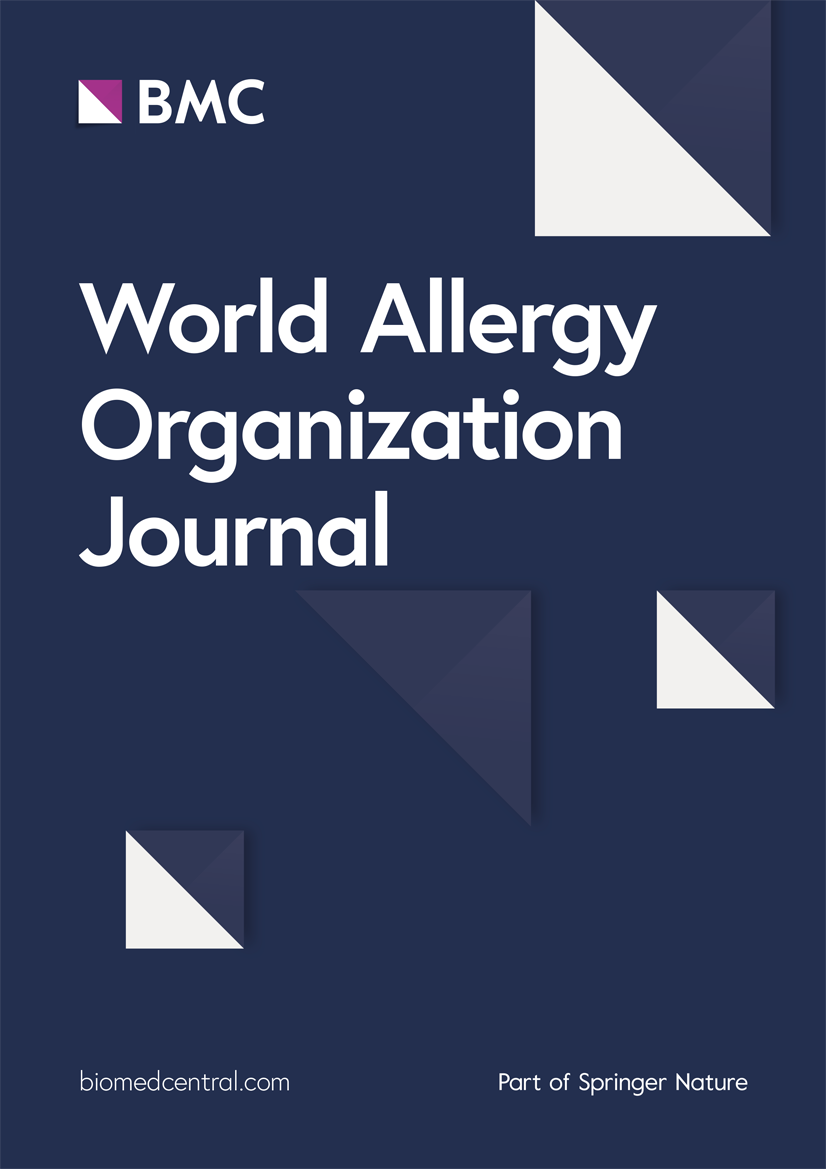1型干扰素信号由肠道菌群协调抑制ige介导的与维生素D3信号相关的过敏反应
IF 4.3
2区 医学
Q2 ALLERGY
引用次数: 0
摘要
目的ige /抗原(Ag)介导的全身过敏反应(SA)涉及1型干扰素(IFN1)、维生素D3(VD3)和肠道微生物群的改变。然而,它们之间的相互作用在很大程度上仍然未知。本研究旨在研究稳态下IFN1和VD3信号之间的相互作用及其与SA肠道微生物群的关系。方法将缺乏IFN1 α受体亚基1 (Ifnar1, Ifnar1−/−)、免疫相关GTPase家族M蛋白1 (Irgm1, Irgm1−/−)或VD3受体(Vdr, Vdr−/−)的雌性成年C57BL/6小鼠分别于第1、15和29天静脉注射IgE/Ag诱导被动SA (PSA)或腹腔注射卵清蛋白(OVA),并于第43天静脉注射OVA诱导活性SA (ASA)。分别给药IFNα (5000 U, 2剂)和IFNα (3500 U, 12剂)。补充VD3(富含VD3的饮食,持续3周)或细菌(每天口服,持续6周)。体外研究了IFN1和VD3信号对小鼠骨髓源性肥大细胞(mBMMCs)激活的影响。结果与野生型(Wt)小鼠相比,Ifnar1−/−或Vdr−/−小鼠的PSA和ASA均更严重(Ifnar1−/−小鼠的严重程度高于Vdr−/−小鼠),而Irgm1−/−小鼠的PSA和ASA均显著减弱。在Vdr−/−小鼠中,外源性IFNα对PSA和OVA-IgE产生的抑制作用部分受损,而外源性VD3对Ifnar1−/−小鼠的抑制作用保持不变。在稳定状态下,Ifnar1 - / -小鼠血清中VD3水平下降,Irgm1 - / -小鼠血清中IFN1水平升高,而Vdr - / -小鼠血清中IFN1水平保持不变。在IgE产生过程中,内源性IFN1和VD3的表达,以及粪便中的拟杆菌和拟杆菌的表达均下降。口服补充Bacteroides可通过IFN1/VD3轴显著抑制IgE的产生,而Alistipes可通过轻微上调VD3表达而不受IFN1调节而适度降低IgE的产生。自发和诱导脱颗粒在Vdr - / -中比在Ifnar1 - / - mBMMCs中更为突出。IgE/Ag刺激导致Vdr−/−中膜IFNAR1的减少比Wt mBMMCs中更大。P38和PKD2激酶在Vdr - / - mBMMCs中的显著抑制和部分恢复IFNAR1的表达。外源性VD3可以逆转IFNAR1的减少,从而增强Wt型mBMMCs中ifn α介导的抗脱颗粒作用,而在Vdr - / - mBMMCs中则没有这种作用。这些发现表明,IFN1稳态与限制SA更相关,部分通过维持VD3表达。肠道拟杆菌的减少通过破坏体内的IFN1/VD3轴来促进IgE的产生。VD3在发挥抗脱颗粒作用方面似乎比IFNα更有效,因为它在体外对抗膜IFNAR1在mBMMCs上的下调。本文章由计算机程序翻译,如有差异,请以英文原文为准。
Type 1 interferon signalling orchestrated by gut microbiota suppresses IgE-mediated anaphylaxis associated with vitamin D3 signalling
Objective
IgE/antigen (Ag)-mediated systemic anaphylaxis (SA) involves alterations in type 1 interferon (IFN1), vitamin D3(VD3) and the gut microbiota. However, their interactions remain largely unknown. This study aimed to investigate the interactions between IFN1 and VD3 signalling at steady-state and their relationships with the gut microbiota underlying SA.
Methods
Female adult C57BL/6 mice lacking IFN1 alpha receptor subunit 1 (Ifnar1, Ifnar1−/−), immune-related GTPase family M protein 1 (Irgm1, Irgm1−/−) or VD3 receptor (Vdr, Vdr−/−) were intravenously (IV) administered with IgE/Ag to induce passive SA (PSA) or intraperitoneally (IP) administered ovalbumin (OVA) on days 1, 15, and 29, followed by IV OVA on day 43 to induce active SA (ASA). IFNα (5000 U, 2 doses) and IFNα (3500 U, 12 doses) were IP administered in PSA and ASA models, respectively. Supplementation of VD3 (VD3-rich diet for 3 weeks) or bacteria (oral administration daily for 6 weeks) was performed. The effects of IFN1 and VD3 signalling on the activation of murine bone marrow-derived mast cells (mBMMCs) were tested in vitro.
Results
Compared to wild-type (Wt) mice, both PSA and ASA were more severe in Ifnar1−/− or Vdr−/− mice (with greater severity in Ifnar1−/− than in Vdr−/− mice), but were significantly attenuated in Irgm1−/− mice. The inhibitory effects of exogenous IFNα on PSA and OVA-IgE production were partially impaired in Vdr−/− mice, while the inhibitory effects of exogenous VD3 remained intact in Ifnar1−/− mice. At steady state, the serum VD3 levels decreased in Ifnar1−/− and increased in Irgm1−/− mice, whereas the serum IFN1 levels remained unchanged in Vdr−/− mice. During IgE production, endogenous IFN1 and VD3 expressions, along with faecal Alistipes and Bacteroides, decreased. Oral supplementation with Bacteroides significantly inhibited IgE production via the IFN1/VD3 axis, whereas Alistipes moderately reduced IgE production by slightly upregulating VD3 expression independent of IFN1 modulation. Both spontaneous- and induced-degranulation were more prominent in Vdr−/− than in Ifnar1−/− mBMMCs. IgE/Ag stimulation led to a greater reduction in membrane IFNAR1 in Vdr−/− than in Wt mBMMCs. Inhibition of P38 and PKD2 kinase significantly and partially rescued membrane IFNAR1 expression in Vdr−/− mBMMCs, respectively. Exogenous VD3 could reverse the IFNAR1 reduction and thereby enhance IFNα-mediated anti-degranulation in Wt mBMMCs, an effect that was lost in Vdr−/− mBMMCs.
Conclusions
These findings demonstrate that IFN1 homeostasis is more relevant for limiting SA, partially through maintaining VD3 expression. A reduction in gut Bacteroides promotes IgE production by disrupting the IFN1/VD3 axis in vivo. VD3 appears more potent than IFNα in exerting anti-degranulation effects, as it antagonises the downregulation of membrane IFNAR1 on mBMMCs in vitro.
求助全文
通过发布文献求助,成功后即可免费获取论文全文。
去求助
来源期刊

World Allergy Organization Journal
Immunology and Microbiology-Immunology
CiteScore
9.10
自引率
5.90%
发文量
91
审稿时长
9 weeks
期刊介绍:
The official pubication of the World Allergy Organization, the World Allergy Organization Journal (WAOjournal) publishes original mechanistic, translational, and clinical research on the topics of allergy, asthma, anaphylaxis, and clincial immunology, as well as reviews, guidelines, and position papers that contribute to the improvement of patient care. WAOjournal publishes research on the growth of allergy prevalence within the scope of single countries, country comparisons, and practical global issues and regulations, or threats to the allergy specialty. The Journal invites the submissions of all authors interested in publishing on current global problems in allergy, asthma, anaphylaxis, and immunology. Of particular interest are the immunological consequences of climate change and the subsequent systematic transformations in food habits and their consequences for the allergy/immunology discipline.
 求助内容:
求助内容: 应助结果提醒方式:
应助结果提醒方式:


